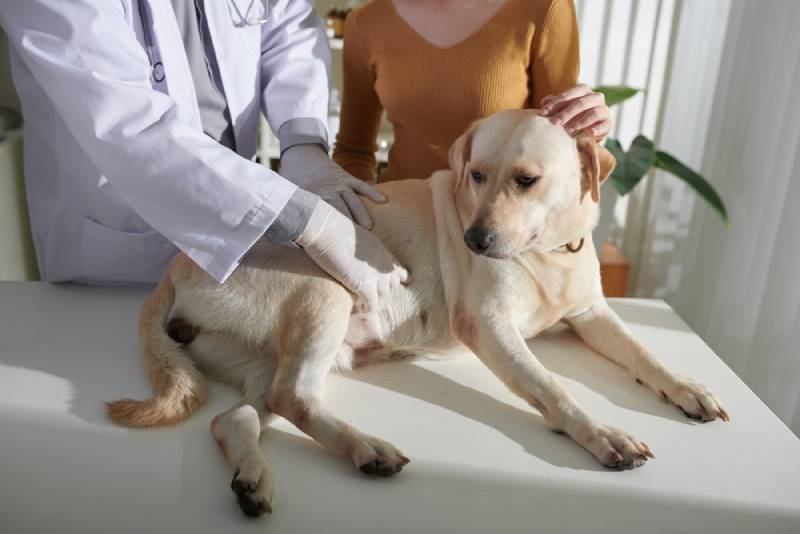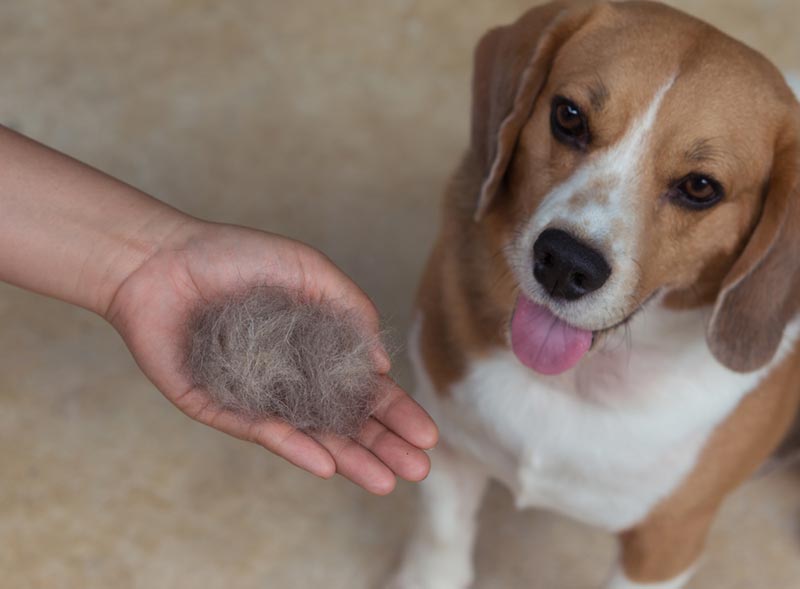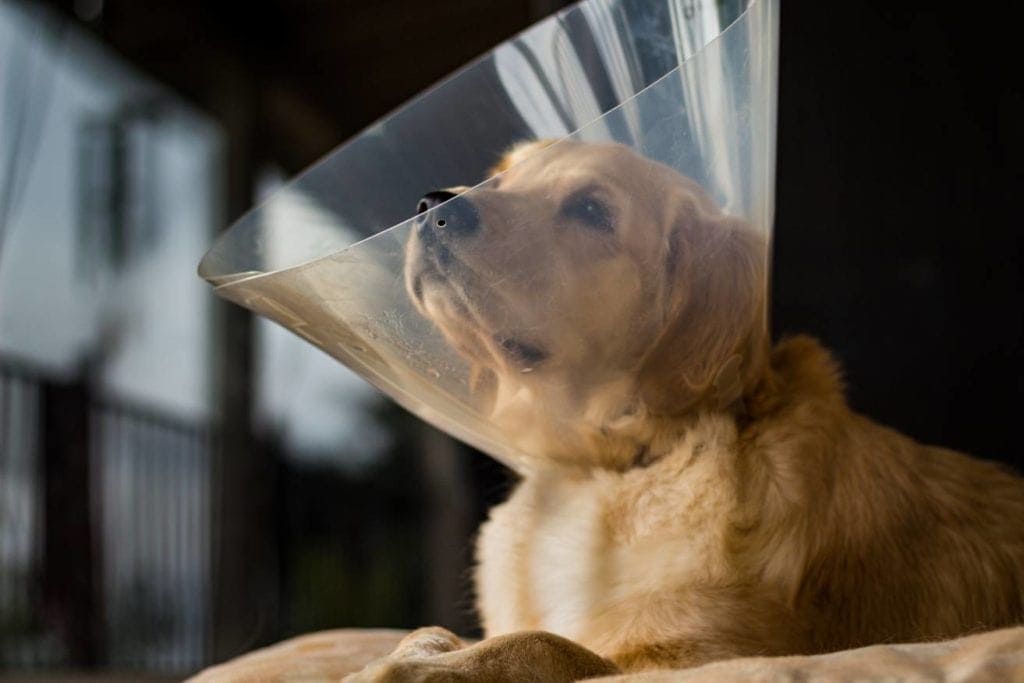6 Wirehaired Pointing Griffon Health Issues to Watch Out For
By Ashley Bates
Updated on
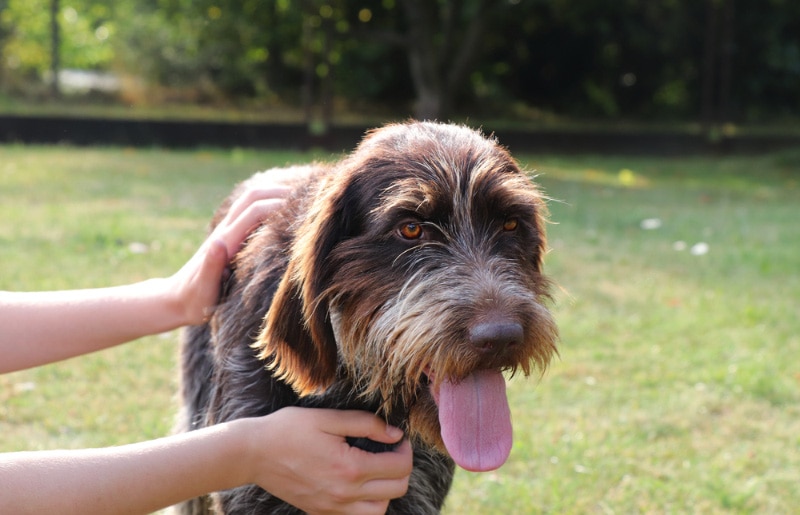
When you get any dog, it is crucial to know a lot about the breed—from required diet to exercise to health issues. With a stout, sturdy dog like the Wirehaired Pointing Griffon, you often avoid many problems due to overall breed healthiness.
However, that isn’t to say that there aren’t any problems that can be directly associated with the breed. The Wirehaired Pointing Griffon can sometimes develop certain genetic conditions. We are going to go over each one, how you can avoid it, and what you can do to keep your pup in tip-top shape.
The 6 Wirehaired Pointing Griffon Health Issues
1. Hip Dysplasia
Hip dysplasia is a skeletal condition that causes the hip bones to rub together from a lack of cushion between joints. This is an extremely painful condition that can impact the overall function of a dog, leading to necessary surgical intervention.
Hip dysplasia is, unfortunately, a very common genetic issue that affects certain breeds more than others. With proper testing among parents, it can often be avoided. Any dog who is at risk for transferring hip dysplasia should never enter a breeding program.
Signs of Hip Dysplasia in Dogs
Often, signs of this condition are obvious, as they cause physical discomfort that is hard to ignore.
Signs of hip dysplasia include:
- Hind leg lameness
- Decreased activity
- Decreased range of motion
- “Bunny hopping” gait
- Grating sound during movement
- Reluctance to exercise
- Loss of muscle mass in the thigh area
Hip Dysplasia Diagnosis
If you think that your dog has this condition; your vet will complete a physical exam and likely opt for imaging, such as X-rays, CT scans, and ultrasounds. The method will depend on the stage of hip dysplasia.
You can get genetic testing done early to see the likelihood of your Griffon having the issue later in life. A PennHip test is a radiological diagnostic tool that tells the likelihood of hip dysplasia development later in life.
Hip Dysplasia Treatment
Hip dysplasia can have treatment options that depend on the severity of the condition. Often, hip dysplasia is treated with polysulfated glycosaminoglycan injections to maintain pain levels and increase mobility capabilities. Other times, it requires surgery.
With proper care, dogs with hip dysplasia will have a normal life expectancy.
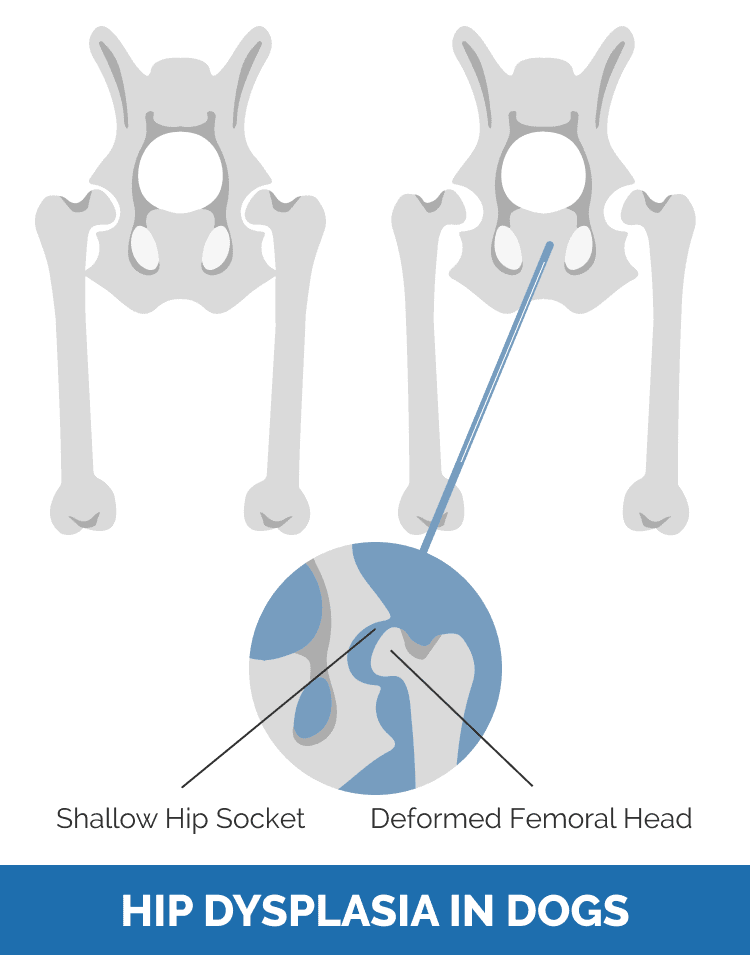
2. Entropion
Entropion is an eye condition where the eyelids roll inward. When this happens, the eyelashes and hair rub on the sensitive parts of the eye, causing irritation. Over time, this can lead to much bigger conditions that affect the eyes—like corneal ulceration.
This problem can be either genetic in nature or secondary to another condition. It is most common in brachycephalic dogs, giant breeds, and sporting dogs. Other causes include eyelid scarring, eye infections, extreme weight loss, or nerve damage.
Signs of Entropion in Dogs
Entropion is often very obvious when signs start to show.
Signs of entropion include:
- Watering eyes
- Bloodshot eyes
- Mucoid discharge
- Squinting
- Corneal ulceration
Entropion Diagnosis
Often, visual inspection can detect entropion in dogs, but that’s not where it ends. Dogs that suffer from this condition are often tested for corneal damage by applying fluorescent dye. Once it is verified, your vet will assess the damage and treat the issue accordingly.
Entropion Treatment
If corneal ulceration is a problem, further treatment is necessary. Often, your vet will prescribe antibiotics to prevent or treat an existing infection in the cornea. If that isn’t sufficient, surgery might be necessary to correct the condition.
3. Cataracts
Cataracts are quite a common occurrence as dogs age. This affects not only this particular breed but several breeds in the lineup. Cataracts are usually caused by an inherited disease, which means it is a problem in the breed.
However, it can also happen due to injury and more diseases, such as diabetes. Also, many cataracts form spontaneously as dogs age. Cataracts can vary in severity, causing little to complete vision loss.
Types of Cataracts
There are three types of cataract stages:
- Incipient—15% of the lens, no visual deficits
- Immature—more than 15%, involves multiple layers, mild visual deficits
- Mature—involves entire lens, significant blindness and near-sightedness
- Hypermature—shrunken lens, wrinkled lens capsule
Signs of Cataracts
You can often tell there is a problem with your dog’s eye simply by looking at it. Often cataracts have visual cues to tell you that something is just not right.
Signs of cataracts include:
- Cloudy film over eye
- Clumsiness
- Bumping into things
Cataract Diagnosis
Typically your vet will examine your dog’s eyes by using a magnifying lens and bright light. Advanced cataracts are usually easy to detect while developing cataracts can take a more careful diagnosis.
Cataract Treatment
Unfortunately, there are no medications that can help with cataracts. However, there are very effective surgeries that allow the surgeon to remove the cloudy part of the lens, restoring some of the vision.
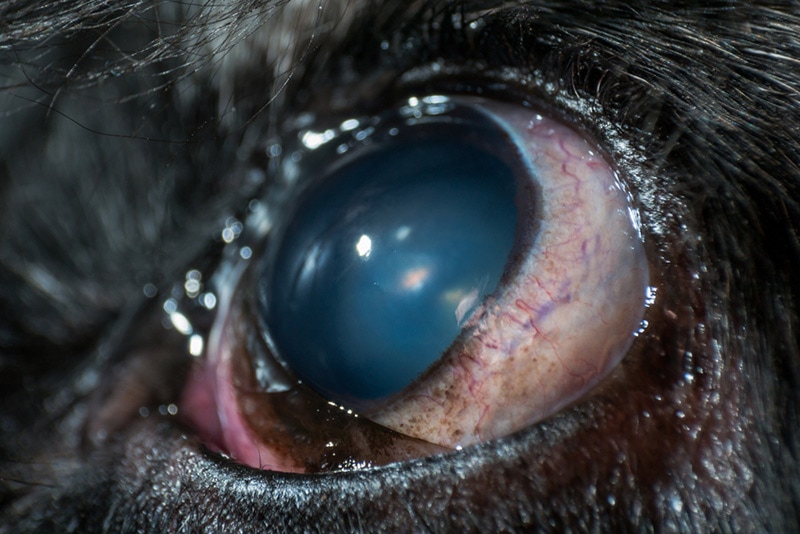
4. Hypothyroidism
Hypothyroidism is a condition caused by the decrease in thyroid function. According to VCA Hospital, it is generally caused by two diseases: lymphocytic thyroiditis and idiopathic thyroid gland atrophy. The underlying cause can vary depending on the dog in question.
An underactive thyroid causes the body’s metabolism to slow down, decreasing the overall effectiveness of hormone distribution.
Signs of Hypothyroidism
Hypothyroidism can directly impact your dog in a myriad of ways. In fact, this is by far the longest list of any of the six conditions that affect the Wirehaired Pointer Griffon.
Signs of hypothyroidism include:
- Dry coat
- Weight gain
- Cold intolerance
- Excessive shedding
- Balding coat
- Increased dark pigment in the skin
- Recurrent skin and ear infections
- High blood cholesterol
- Slowed heart rate
In some cases, signs will also include:
- Loss of libido
- Corneal fat deposits
- Dry eyes
- Lack of heat cycles in females
- Thickening of facial skin
Hypothyroidism Diagnosis
There is a test called TT4, or total thyroxine level, blood tests. This method includes a thyroid panel that measures the amount of hormone your dog’s thyroid produces. Testing low indicates hypothyroidism, while testing high indicates hyperthyroidism.
Hypothyroidism Treatment
Hypothyroidism is not a curable disease. However, you can help your dog regulate themselves with proper medications. Vets will prescribe a specially-tailored amount of thyroid replacement hormones. These hormones are synthetic and taken orally.
5. Progressive Retinal Atrophy
Progressive retinal atrophy (PRA) is a debilitating eye issue among canines. It is a grouping of degenerative diseases that affect the photoreceptor cells and the retina. As these cells degenerate over time, it causes a lot of visual complications, leading to blindness.
There are two types of progressive retinal atrophy. The first is inherited and generally affects puppies between 2 and 3 months of age. It is called retinal dysplasia. There is also a late-onset version of this which affects dogs between the ages of 3 and 9 years.
Signs of Progressive Retinal Atrophy
One positive thing about progressive retinal atrophy is that it is not a painful disorder. While it doesn’t carry a laundry list of signs, there are some ways to tell your dog might be suffering from the condition.
Signs of progressive retinal atrophy include:
- Extra-reflective eyes
- Developing fear of dark
- Bumping into surfaces
- Clumsier than usual
Often, this disease is asymptomatic to the naked eye for quite some time.
Progressive Retinal Atrophy Diagnosis
Often vets will have to use an ophthalmoscope to detect the increased reflectivity on a portion of the retina called the tapetum lucidum, which is responsible for making a dog’s eyes glow at night. This will detect changes in the optic nerves in retinal blood vessels.
Unfortunately, this particular disease will cause eventual vision loss. Once the onset occurs, your dog’s vision will gradually get worse until they become completely blind. However, during this stage, you can find ways to make your dog’s life much easier.
Progressive Retinal Atrophy Treatment
Currently, progressive retinal atrophy has no effective treatment available on the market.
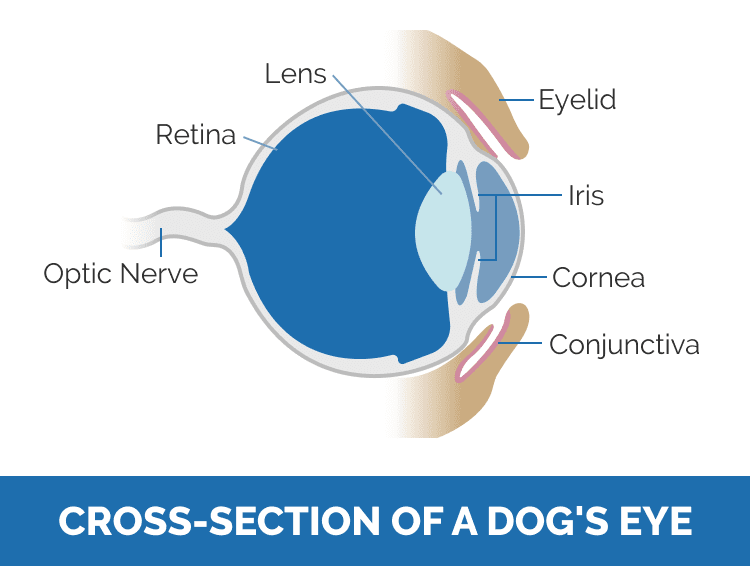
6. Epilepsy
Epilepsy is a neurological condition that causes seizures. It is a very serious medical condition that can cause much bigger issues, including a decrease in life expectancy. In addition to its grim outlook in some cases, it is sadly the most common neurological condition seen in dogs.
Epilepsy can be both genetic (meaning present at birth from parental influence) or idiopathic (meaning there is no identifiable cause).
Types of Seizures
Epilepsy can consist of several types of seizures, including:
- Tonic Seizure: Stiffening of the muscles that can last several minutes.
- Tonic-clonic Seizure: A seizure that goes from muscle stiffening to jerking movements.
- Refractory Epilepsy: Seizures that happen despite being medicated.
- Myoclonic Seizure: Sudden contractions of certain muscle groups.
- Generalized Seizure: Seizures from both hemispheres of the brain.
- Cluster Seizures: Two or more seizures within 24 hours, generally.
- Focal Seizure: Partial seizures affect one side of the brain, affecting a certain area of the body in turn.
- Atonic Seizure: A sudden loss of muscle tone which does not come following a tonic or myoclonic event.
Epilepsy Diagnosis
Epilepsy is usually diagnosable after ruling out other causes. Often, a vet might use blood or urine tests, X-rays, cerebrospinal fluid taps, or MRIs.
Epilepsy Treatment
Anticonvulsant medications are sometimes prescribed to people with epilepsy, depending on the severity. Because of negative side effects, these medications are generally not prescribed unless the dog has a seizure more than once a month or experiences cluster or grand mal seizures.
How to Prevent Health Problems in Your Wirehaired Pointing Griffon
We primarily discussed genetic conditions that affect this particular breed. However, a dog can acquire a series of illnesses, diseases, and conditions based on diet, environment, lifestyle, and otherwise.
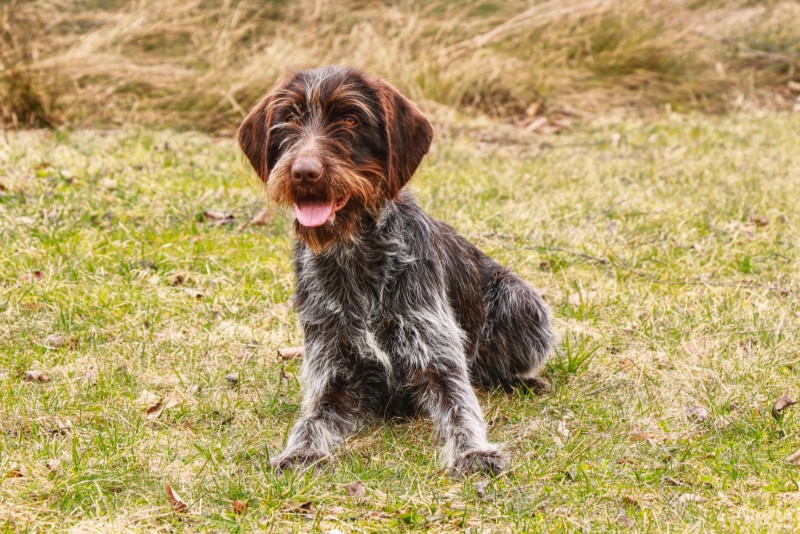
Buying from a Reputable Breeder
You can buy from a reputable breeder to navigate many breed-related issues. Breeders have a large number of criteria that they follow to ensure dogs produce the best specimens possible. A person who cares very much about the breed will run rigorous testing on subjects before breeding occurs.
- Potential owner screening
- In-person visits
- Providing breed education
- Asking for or allowing you to see pictures
- Providing adequate living conditions
- Provides all vet records
- Works with a kennel club or breed organization for legitimacy
- Keeps puppies until 8 weeks of age
- Breeder will take deposits
- Provides health guarantees
- Requires puppy contracts
Backyard breeding or puppy mills do not produce quality puppies—nor do they care for the breeding pair in a correct fashion. Often, these puppies will live without proper meals, have filthy living conditions, and potentially poor temperaments or health.
- Unexpectedly low prices
- Will rush your purchase
- Won’t request any information about your home
- Will refuse visits prior to puppy pickup
- Will not have vet records
- Do not provide health guarantees
- Will not allow access to parents
- Reluctant to answer questions
If you suspect this is what is happening, steer clear of this breeder.
Keeping Up with Regular Vetting
When you purchase your puppy, it’s already time to make their first vet appointment. Your vet will be able to monitor your puppy’s growth and create a vaccination schedule to give them a good start in life.
In the first year, your puppy will need routine vaccinations, parasite prevention, and spay or neuter surgery. You can also get an elective microchip for tracking purposes. Your vet will monitor your pup’s weight and growth to ensure they are on track.
After the first year, your dog will need annual checkups unless a problem develops in between. They will ask lots of questions about your dog and try to scope out potential problems. If your vet believes there is a developing issue, they can take care of it as the issue arises.
Support Regular Breed-Appropriate Exercise
Exercise is important for any dog—but particularly for very active dogs like the Wirehaired Pointing Griffon. They need not just physical outlets, but proper mental stimulation, too. On average, this breed requires about an hour of exercise daily.
The Wirehaired Pointing Griffon loves to be outside—it’s quite literally in their blood. So, they will love all sorts of outdoor activities, including:
- Long walks
- Hikes
- Scavenger hunts
- Dog park visits
- Interactive games
- Fenced-in playtime
If your dog has an appropriate outlet, they will thrive physically, avoiding issues like obesity.
Give Your Dog the Right Diet
Diet is an incredibly important part of our dog’s daily life. Your dog will require a high protein, nutrient-dense recipe in accordance with their life stage. These dogs require calorie replenishment as they burn a lot of energy throughout the day.
There are lots of dietary options available now that weren’t even available 10 years ago. Many pet parents are switching from the traditional dry kibble and wet canned selections to fresh food options that are more species appropriate.
Also, many fresh food options are delivered directly to your door in individualized pre-packaging, perfectly portioned for your pup. Granted, these options are more expensive, but some certainly find them worth the extra money.
Going the traditional route is fine as well. Just make sure to get high-quality dog food with all the vitamins, minerals, protein content, and fatty acids your dog needs to thrive. Try to avoid brands that use artificial flavors, dyes, and filler ingredients.
Conclusion
A Wirehaired Pointing Griffon has quite a small list of potential health issues compared to other breeds. They truly are a generally healthy dog breed that often has very few vet visits in a lifetime. Most of the problems that develop in the breed are also mild and easily managed.
Keep in mind that regular vet care can help alleviate a lot of long-term problems. The quicker you get a handle on certain developing issues, the more you can help your dog through whatever illness or condition plagues them.
See Also: How Big Do Wirehaired Pointing Griffons Get? Average Weight & Growth Chart
Featured Image Credit: Vaclav Sonnek, Shutterstock





